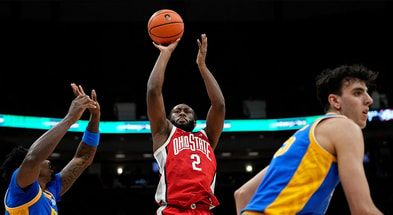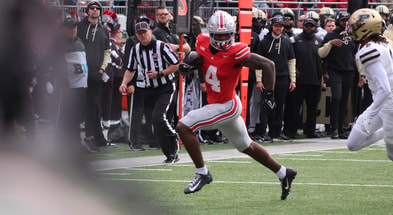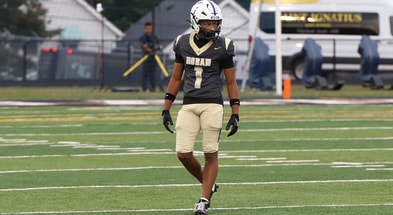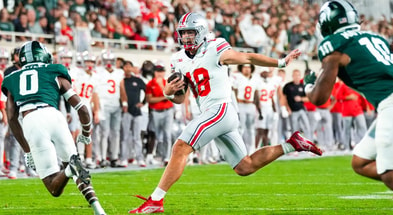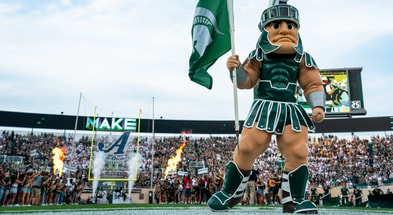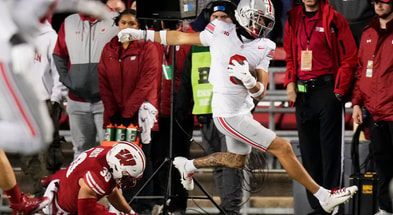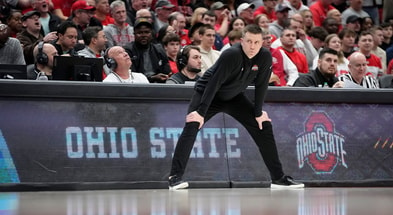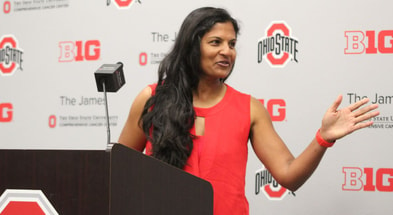Gene Smith balancing safety, desire to give Buckeyes opportunity to play

COLUMBUS — Gene Smith has maintained a consistent, cautious stance since the first hints that Covid-19 could evolve into the societal-altering pandemic it became.
In Year No. 16 as Ohio State athletic director, and further in his seventh year as one of the vice presidents of the university, he was aware of the troubling traits of the virus, one of which was the exponential spread. And another of which was even more ominous.
“People are losing their lives,†Smith said. “That’s just unsettling. For us to not be touched by that, I wouldn’t understand that.â€
That’s why he was the outspoken voice in the Big Ten leadership realm who pushed for cancellation of the league basketball tournament back in March while many others seemed less alarmed. He took the same approach with Ohio State athletics, leading to the shutdown of facilities, and thus gatherings, also in mid-March so as to lessen the jeopardy for all involved.
It’s also why he has been among those adhering to a cautious approach about reopening facilities and inviting players and coaches to return. He finally gave the green light for football and a few other sports to allow voluntary workouts on a tightly limited basis starting June 8, since state of Ohio officials and the NCAA also have approved such gatherings.
But he’s “not there yet†in terms of condoning the mass gatherings that accompany college football games and their preparations, which according to the scientific views could help reignite the spread of the virus and then add to the load of the healthcare providers on the front line of the battle.

Ohio State coach Ryan Day and athletic director Gene Smith are planning for a season to be played. (Birm/Lettermen Row)
“I think we have to be as thoughtful as possible about the human part of this whole thing, first and foremost,†Smith said. “That’s just who I am, the way I operate.â€
Folks such as Smith are caught in the squeeze. On one side is the pandemic and all that it entails. On the other side are sports fans and perhaps even coaches and players who can’t fathom a fall without major college football. On top of that are the pressures that could come with losing a year’s worth of the primary revenue source for all major college athletic programs.
So while he has been dealing with the day-to-day challenges of the past two months, he and his staff have been wrestling with the contingency plans that must be considered once a clearer view of the fall comes into focus by, say, early July. Who knows, by then, new social distancing guidelines might allow upwards of 50,000 to attend Ohio State home games — instead of the 22,000 or so projected at the moment for the 100,000-plus-seat Horseshoe.
By then, there also might be a clearer picture on who’s in and who’s out in terms of scheduling. For example, the much-anticipated Ohio State intersectional game at Oregon seems iffy at the moment, due to recent developments in the state of Oregon. Such possibilities are why the major conferences are at least considering a league-only schedule just to get through this year, if that’s what it takes.
“First, you want to play the full schedule, and not just for us,†Smith said, citing how he knows from experience years ago as a first-time athletic director at Eastern Michigan what the revenue for Bowling Green and Buffalo from the road games at Ohio State would mean to their overall athletic budgets. “Secondly, I would lean to a conference schedule of nine or 10 games if we could work that out. I could probably be comfortable with eight, which would be challenging, but I would feel better with 10 so you could do five away, five at home.
Top 10
- 1
No. 1 Auburn upset
Florida dominates Tigers
- 2New
Dusty May
Gets ahead of Indiana rumors
- 3
Rick Pitino
New sheriff in Big Ten?
- 4
Ryan Day
Buyout revealed from new contract
- 5
UNC president
Belichick hire fall out
Get the On3 Top 10 to your inbox every morning
By clicking "Subscribe to Newsletter", I agree to On3's Privacy Notice, Terms, and use of my personal information described therein.
“Our kids want to play, so it’s hard for me to say eight games wouldn’t be important to them, but I think it would be. There’s a few young men, this would be their last opportunity [to play college football games]. So, I want to make sure that we, first and foremost with their safety at mind, do whatever we can do to give them that chance. I want to bend over backwards to give them that chance.â€
The players are at the heart of his thoughts.

Gene Smith wants to give players like Justin Fields an opportunity. (Birm/Lettermen Row)
“So for me to say it’s eight, nine, or 10, or 12, I would first and foremost probably end up talking to our kids, ‘Hey, here’s where we are, what do you think?’” he said.
While the contingency thoughts could be maddening, Smith has maintained a simple approach to the process.
“We’ve been focused on the moment,†he said. Such as in the beginning, establishing the framework for virtual meetings between players and coaches, and coordinating workouts from afar for players, and other hot topics for NCAA legislation such as the transfer issue.
Decisions are starting to be made by the state governing entities in the realm of reopening, along with evolving rules for social distancing and interaction. That gives the people in his arena like Smith the ability to say: “OK, let’s make decisions based on these facts we have in front of us. … It’s hard to make quantifiable in-game decisions until these other decisions are made.â€
Yet there are contracts that also must be considered, such as those he alluded to earlier with non-conference opponents Oregon, Bowling Green and Buffalo, and the Big Ten’s pacts with television networks from which the lion’s share of the football revenue springs.
“Again, all those things are secondary compared to the health and safety issue,†Gene Smith said. “If we can’t put the kids in position to play in a safe way, then all the other stuff is moot. … After that, to me, everything rolls from there.â€


















